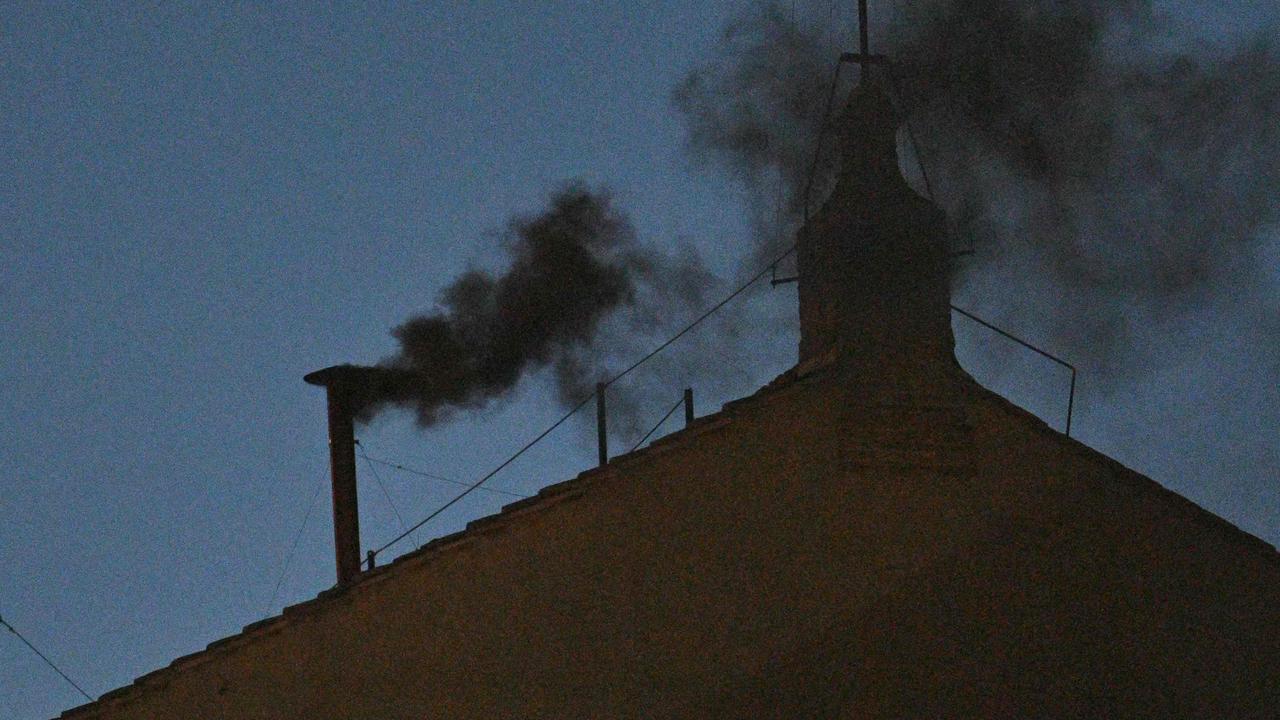Holy Foreskin: The Italian town that housed Jesus’ foreskin is about to disappear
The former hometown of Jesus’ Holy Foreskin could soon be impossible to visit. Yup, it’s not a typo. You read it right.
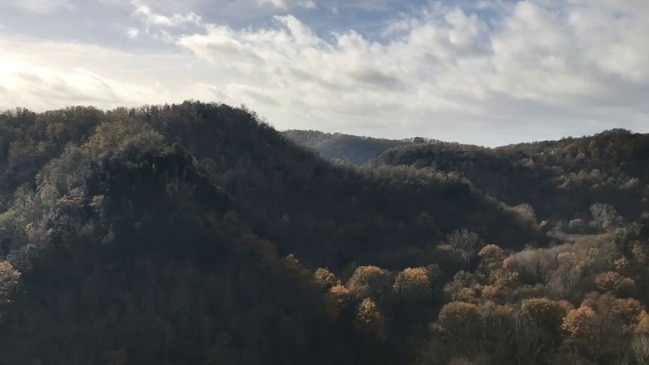
The former hometown of Jesus’ Holy Foreskin could soon be impossible to visit.
Yup, it’s not a typo. You read it right.
Not all of us are Catholics, nor religious, but the Italian village of Calcata is at risk of isolation due to floods where for centuries the Holy Prepuce — yes, that — was treasured and worshipped. Nasty mudslides are threatening to cut the town off for good, shutting all connecting roads.

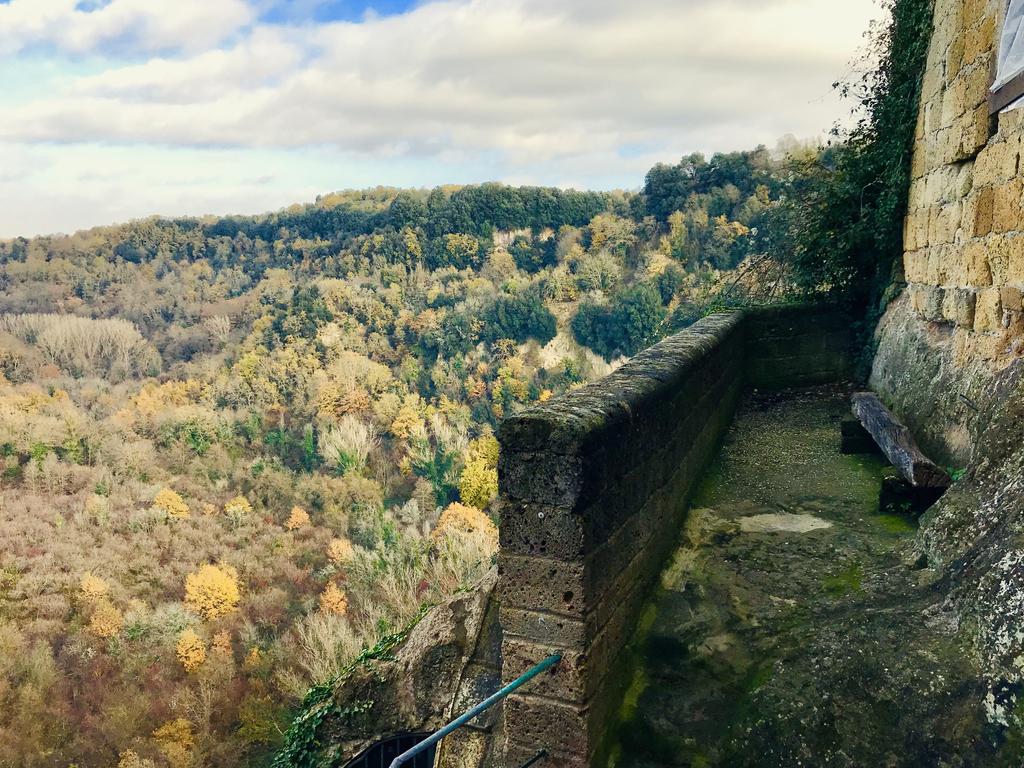
Calcata is older than Rome itself but was built on volcanic tuff, a light porous rock which becomes crumbly with heavy rainfalls. A few weeks ago a storm triggered a landslide on the main road leading to the village, uprooting trees and bringing up heaps of debris. Authorities were forced to shut the route and other smaller unstable streets.
The only access to the village is now by foot.
Italy has been lately rocked by awful weather and floods that are putting at stake the survival of ancient small towns dating back to prehistoric and pre-Roman times like Calcata. This year has been exceptional: climate change impact has led to higher than usual temperatures in autumn that have caused many flash floods and mudslides, destroying roads and houses across the boot.

Calcata has a millenary history but without proper infrastructure upgrading it might soon fall apart. The tuff walls need to be strengthened while the wobbly bridge connecting the lower part of town to a highway also needs a thorough restyle.
The handful of desperate residents — mainly artists and hippies living a hermit life — each morning wake up wondering whether the cliff walls will hold.
“Let’s admit it: this hamlet could crumble any minute. For how much time will it survive? Another week, a few more couple of years? Bits by bits are already falling into the precipice, it’s a slow soil erosion but inevitable. We’re dead worried”, says local Mirella De Paoli.
Even though it’s hard to predict when the town might actually collapse — “only God knows” adds Mirella, lifting her hands to the heavens — the situation is alarming. Calcata is part of the “red zone” mapped by national authorities which is most at risk of natural calamities and earthquakes in Italy.
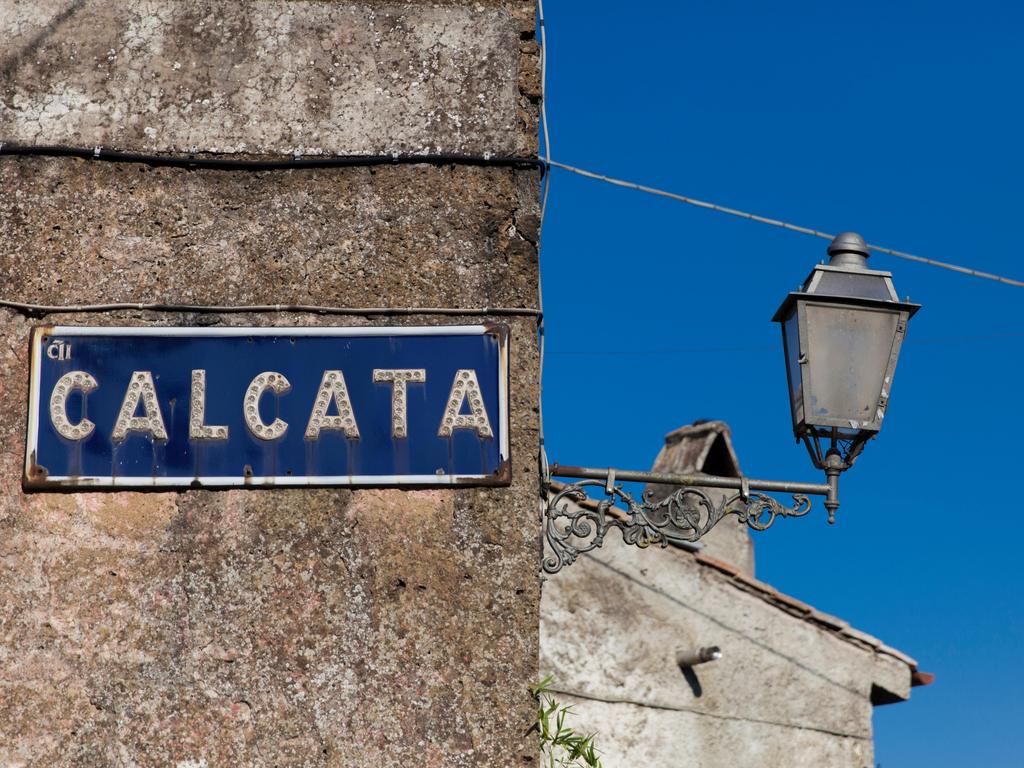

A few elders believe the nasty weather is a divine punishment for losing the Holy Prepuce. “It was our good luck charm against jinx”, says Rosa Fraire, 95.
Despite the tiny piece of sacred foreskin has been missing since 1983, when it was mysteriously stolen, its fascinatingly gruesome story has become a moneymaker luring visitors and relic hunters.
As if the town needed it. The scenery and location alone are powerful magnets.
Calcata, close to Rome, is a stunning, off-the-radar retreat perched on a crumbly reddish tuff hilltop jutting-out of a deep gorge like a giant mushroom. From a distance it’s an optical illusion: the hamlet has been carved from the very hill it sits on, making it impossible to see where the tuff ends and the dwellings begin.
As I squeeze through the maze of narrow cobbled alleys covered with fluorescent green moss, passing under tiny rock arches leading to wall openings over the precipice I spot caves, panoramic balconies cut inside the rock and walled stone doors that were once prison cells.
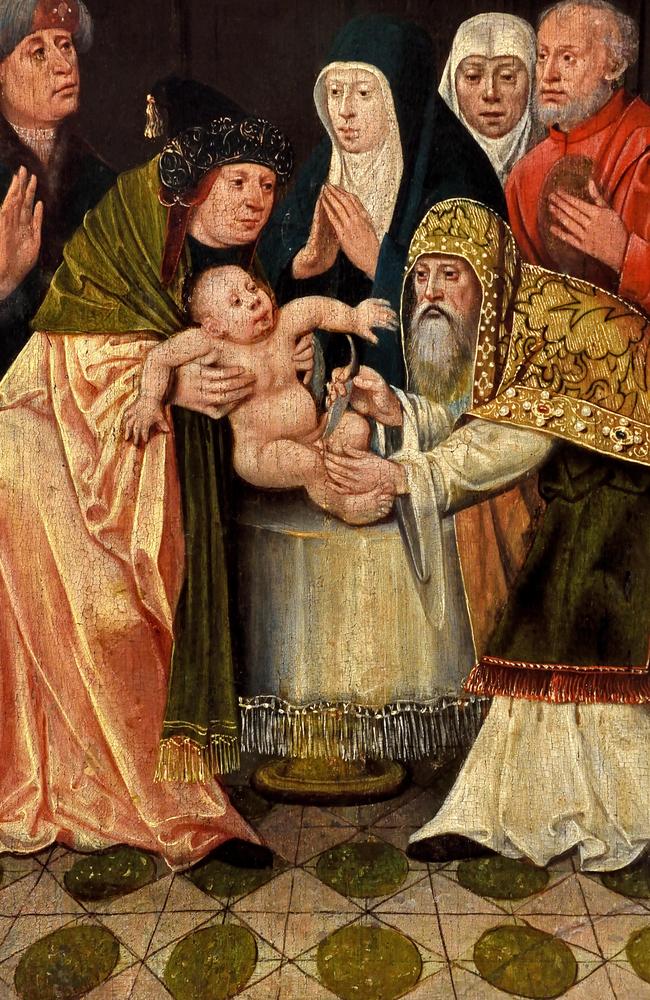

The legend of Calcata’s Holy Foreskin begins inside one such dark cell.
Back in 1527 a German runaway soldier was captured and locked up in the town’s dungeons. He was holding inside his pocket a tiny morsel of Jesus’ Prepuce stolen from a Roman basilica during the Sack of Rome. The foreskin had been robbed from Jerusalem, where the Virgin Mary had cherished it, and taken to Europe after the Crusades. Turned into a relic, it passed from the hands of one emperor to another until it landed in the Eternal City.
The German thief thus hid the relic in a hole inside Calcata’s prison walls until a villager found it years later and kickstarted a miracle. The Foreskin was placed inside a rectangular glass reliquary made of gold and jewels. It was so precious the parish priest slept with it close to his bed at night.
The holy foreskin thus turned into an object of veneration. Calcata became a hot pilgrimage site for centuries, so hot the Vatican had to intervene in the early 1900s to stifle growing fanaticism.
The local church however never caved in to Rome’s demands of putting an end to the cult and continued to venerate the relic, taking the holy foreskin on showy parades across town during the New Year festivity. The 1 of January was celebrated as “The Day of Christ’s Circumcision”. Calcata’s bishop would hold the relic high up in the sky, crowds would kneel and everyone was granted a 10-year remission of all sins.
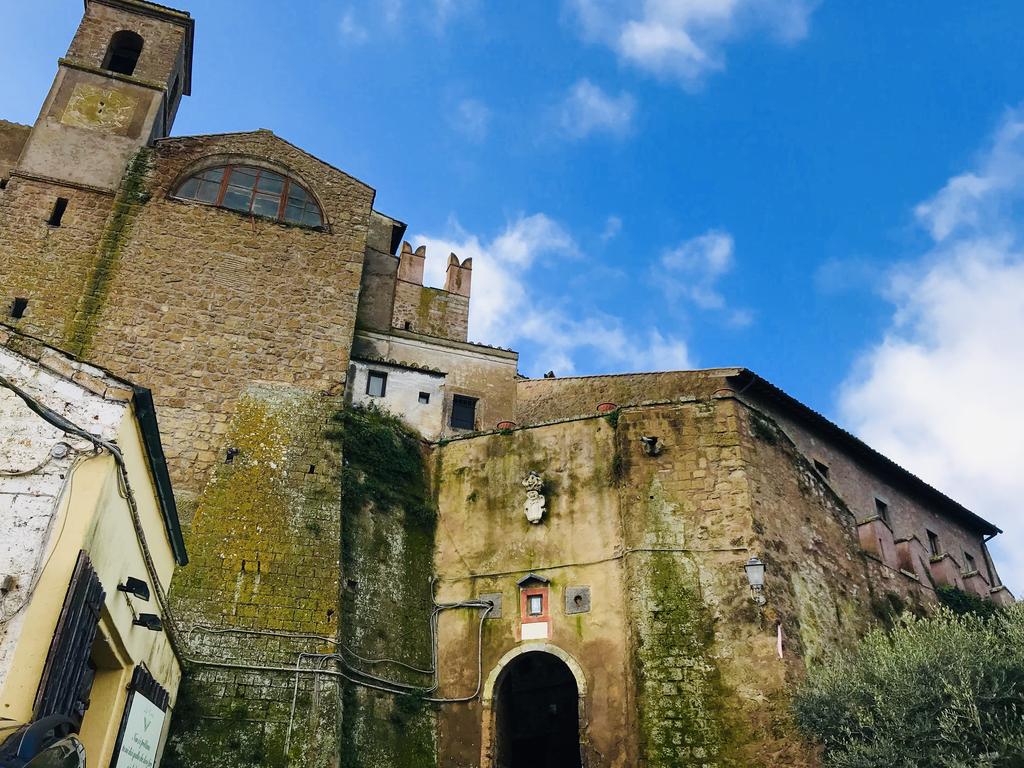

Amen!
The ritual went on until 1987 when the foreskin vanished — again.
What happened is a mystery.
Rumours say it was taken away by an undercover priest sent on a secret mission from Rome to stop the cult, or by a simple thief looking to sell the golden reliquary and its content on the black market. A few locals though believe a heretical, devil-worshipping sect stole and buried it nearby.
Calcata thus lost its holy identity but diehard prepuce worshippers never gave up and a few are still looking for the lost, sacred bit of baby flesh.
I visit the pinkish church where the relic was kept and meditate on how the mystery feeds not just faith but business too.
Despite the few locals shy away when asked about the Holy Foreskin restaurants are keeping up the quest thrill to lure tourists. One is called the ‘Holy Grail’ while the names of bars, tea rooms and B&Bs hint at spiritual elevation, heavens and soul-searching of sorts.
Prepare for a detox, unplugged stay.
Once you walk past the arched stone entrance forget phone calls and internet. There’s no mobile coverage: the last spot where you can catch a poor 3G signal is a wooden stool where it is written: “This chair is for everyone, mobile phones work only here”.
Trespassing that boundary is reminiscent of Dante’s warning in the Divine Comedy’s Inferno: “Abandon all hope, ye who enter here”.
Calcata is far from being hell but it is not the typical, idyllic Italian hamlet. There’s something attractively sinister and exotic about it.
Time stands still.
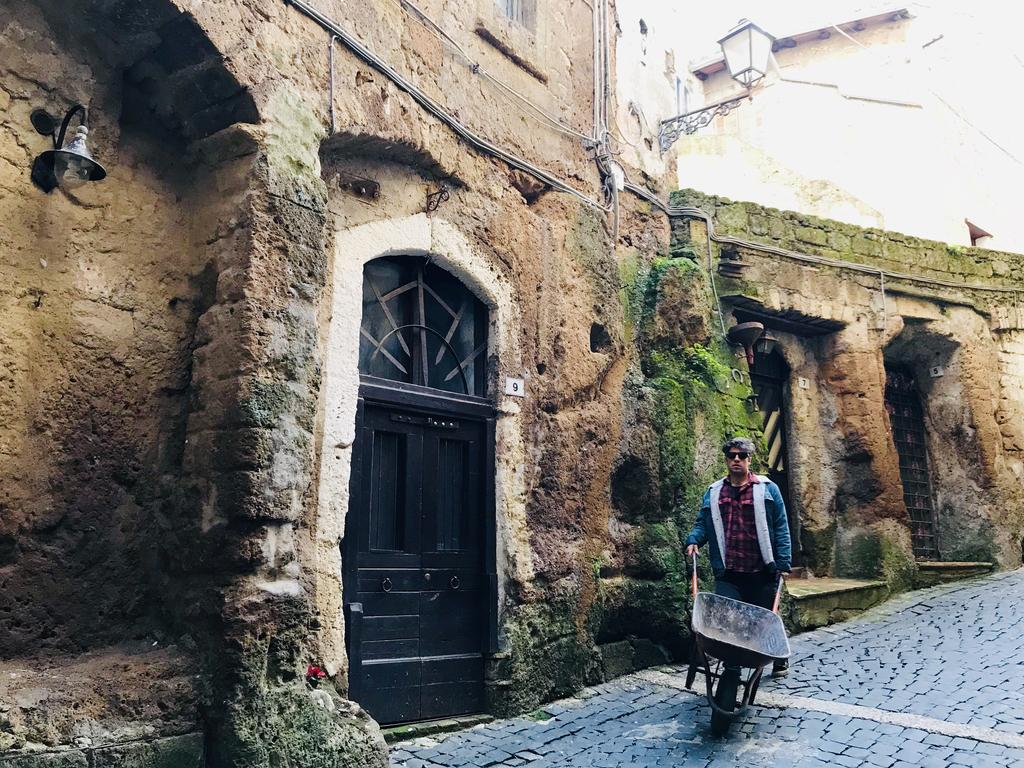
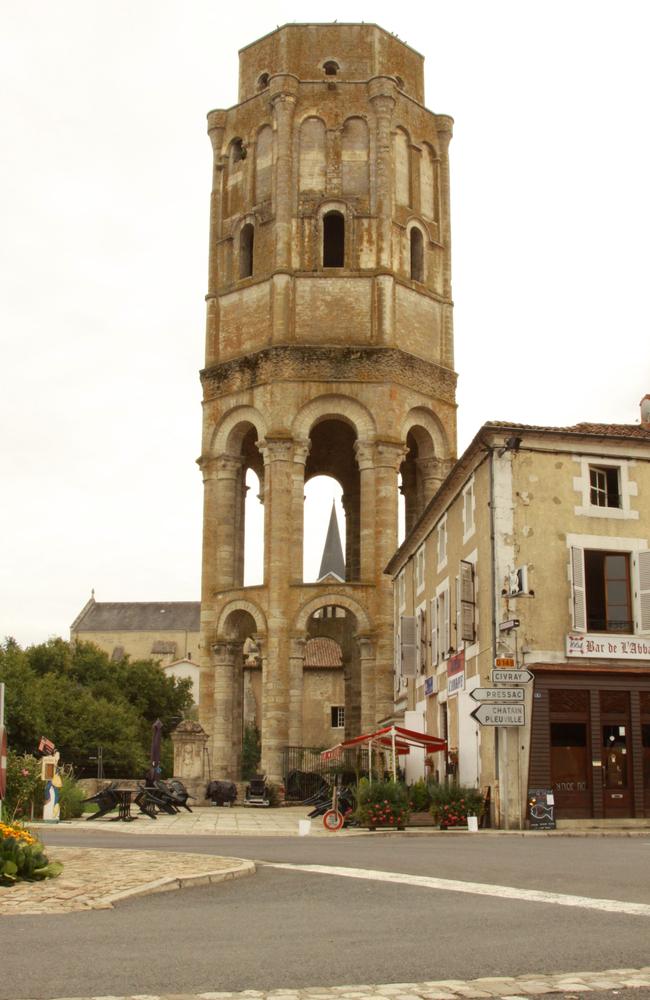
The village overlooks a wild valley of thick jungle-like forests and rivers where ancient tribes — the ‘Falisci’ — wrote weird prayers on stream-beds and had a knack for human sacrifices.
There’s a primitive, magical ambience.
Calcata is a so-called “geomantic” centre, i.e. a place with a special vibe where there are deep underground vibrations and magnetic forces that exercise a concentric pull. Locals feel the magnetism, as do day-trippers who still flock here despite having to park the car miles from the village.
It’s dubbed the Witches’ Lair. During blizzards the ice-cold wind is believed to be the wicked chant of sorceresses burnt at the stake.
The village does indeed look like the setting of a Grimms’ tale. Weird monster masks with sticking-out tongues hung above houses, smoke rises from chimney tops, fog curls at street corners. There are minuscule blue, purple and red doors, flower-decorated windows, squeaky wooden benches and rock altars.
I’ve never seen such a grassy, ‘hairy’ village where flashy green is the predominant colour. Poison ivy, moss, ferns and even strange palms and cactus leaves grow in between stone cracks, on cobblestones and rooftops. Nature appears to reclaim her own. You better hurry up!
— Silvia Marchetti is a Rome-based freelance reporter. She covers finance, economics, travel and culture for a wide range of media including Politico and CNN.

